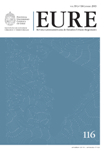Student commuting and territory: Evidence and policy recommendations for the new institutional framework of Public Education in Chile
DOI:
https://doi.org/10.4067/S0250-71612013000100002Keywords:
territorial integration, mobility, segregationAbstract
A key feature of the Chilean school system is the discrimination in educational provision, showing a strong association between learning outcomes, on the one hand, and cultural capital and income of households, on the other. This discrimination forces families to seek educational institutions according to their expectations, generating mobility of students from their communities of origin to other communities. The analysis of the Chilean survey of households in 2006 allowed to quantify this phenomenon (student commuting), and demonstrated the existence of patterns associated with the dynamics of settlement of the population along the country: low mobility in the end regions, intermediate in the central regions of the country, and high in the Metropolitan Region of Santiago. According to these results, we discuss policy recommendations essential to incorporate the territorial dimension in the design of the new institutions of public education in Chile.
ÍDownloads
Published
How to Cite
Issue
Section
License
Copyright (c) 2013 Revista EURE - Revista de Estudios Urbano Regionales

This work is licensed under a Creative Commons Attribution 4.0 International License.
Al momento de aceptar la publicación de sus artículos, los autores deberán formalizar la cesión de derechos de autor a EURE, según las condiciones establecidas por la Revista.
Ésta establece que el autor autoriza a EURE de manera gratuita, exclusiva e ilimitada a reproducir, editar, publicar, distribuir, publicitar, comercializar y traducir el artículo, a cualquier soporte conocido o por conocer y desarrollar.
Del mismo modo, los autores aseguran que el artículo propuesto es original, no publicado y no propuesto para tal fin a otro medio de difusión.


